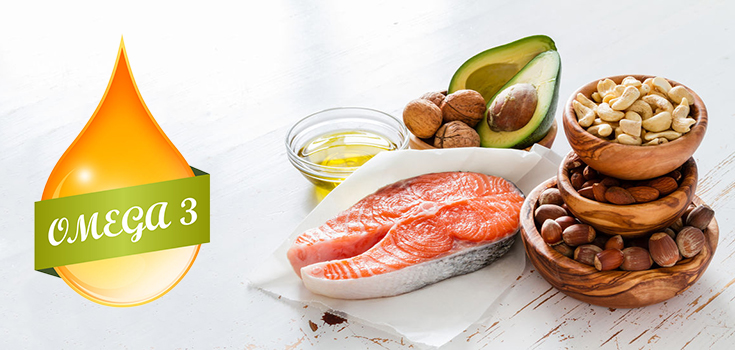
Probably the first thing that comes to mind is red meat. Is anything good about its consumption? Yes. It is much healthier in smaller quantities and in less frequency than we usually consume it. And always grass fed or wild animals are just much better. Grass fed is very often organic as well and it just decreases the toxic exposure to hormones and the antibiotics significantly and most importantly here, the added Omega-6 fatty acids found in unnaturally high amounts in grain-fed livestock because it is an additive to the grain fed to livestock.
Healthful, non-animal fats are oils; nut oils, sesame and most popular, olive oil. These are for sautéing which means lower cooking temperatures and coconut and avocado oils for higher and frying temperatures. Vegetable oils which we see most often in commercial foods, soy, corn, canola and even cottonseed oil and other blended vegetable oils are often chemically and/or mechanically hydrogenated to yield a partially hydrogenated oil – hydrogen has been added usually under pressure to incorporate extra hydrogen bonds into the molecules of these oils in an attempt to make them more stable and thus preserving flavor. This produces poly (more than one) hydrogenated (adding hydrogen) oils. This process also creates trans type fats (TF) in these oils. TF have been demonstrated to be extremely cardiovascular negative! These man made TFs’ configurations i.e., the structure of these molecules have the ability to stick to the arterial wall and clog. As well, these vegetable sources used are mostly all of GMO origin. These are the same Omega-6 oils added to the animal feed.
Better fat and oil consumption is in the top 4 changes everyone needs to make to truly upgrade their health
That is perhaps the main reason I share and educate on this food issue. Understand, there are other good oils like olive oil that are Omega-6s also. But don’t forget how much you pay for these at the register. To bottle these in proper dark green glass bottles with seal tight lids and grow and process olives costs! As you know. But, these and other naturally processed oils you buy and you use in your whole foods is going to be now much better.
The dilemma; healthy oils vs. profitable oils
Processed Omega-6s are used in most all restaurant and packaged foods. The extra bonds in these oils stabilize them, keep them from going rancid and prolong their shelf life so that they can be bought and stored in bulk.
Examples of foods high in these hydrogenated oils are: French fries, chips, tortillas (chips), take out foods, canned soups, salad and most all other dressings, frozen entrees, processed cheese, commercial bread. I know, it’s everywhere!
Omega-6s are functionally needed by our bodies at a 2/1 ratio : Omega-6s/Omega-3s. But as you are able to see we are very far from this ratio because so many of us eat so much of the above noted foods. We are, on average, now at a 10 – 20/1 ratio. The consequences of eating these oils puts us at risk for an increase in metabolic disease; greater fat, pre diabetes (or type II), accelerated arthritis and higher blood pressure (BP).
here do the Omega-9s fit in to this situation?
“I bought a supplement that had Omegas 3, 6 & 9 and I thought I was doing a good thing by getting all 3, Doc.?”
The answer is; we don’t have to worry about Omega-9s as the body produces them. They are present in most all the oils. And if you are trying to eat better whole, and unprocessed foods especially in the way of the addition of seeds and nuts you will be very adequate in Omega-9s.
What foods can I eat that provide significant omega-3s? Of course, eating more fish. – This goes along way because you can get a whole day’s requirement and then some; 900 – 1300 mgs. of Omega-3s in one serving depending on which fish you choose and serving size. They provide a “whole food” serving of Omega-3s. We could, in general, chose fish much more instead of meat. Doing this on a consistent 3-4x/days per week could create an impact on particularly overall inflammation the root of so many diseases and joint function.
Sardines are a lunch favorite in my house with tart lettuce like Arugula and lemon dressing with organic crostini’s. How about salmon burgers? Do them up with a side of Basmati, parslied rice and green beans.
Other, non-animal sources are nuts and seeds such as chestnuts, cashews, sunflower or pumpkin seeds for snacking are consistently ideal. This is another factor that could contribute to a better Omega-6/Omega-3 ratio.
Holistic and traditional medical approaches alike and across the board contend Omega-3s are a must supplement. They have proven cardiovascular and anti-inflammatory benefits. This came to be understood as they became more absent from the diet in the last 40 years as our food consumption has changed.
So, what can we do to increase Omega-3s and balance my Omega-3/6 intake?
- Decrease consumption of processed foods.
- Switching and using more untraditional oils high in Omega-3s; flaxseed and nut oils like walnut.
- Increase your weekly fish intake.
- Decrease red meat and especially non grass-fed.
- Always take an Omega-3 fatty acid supplement.
